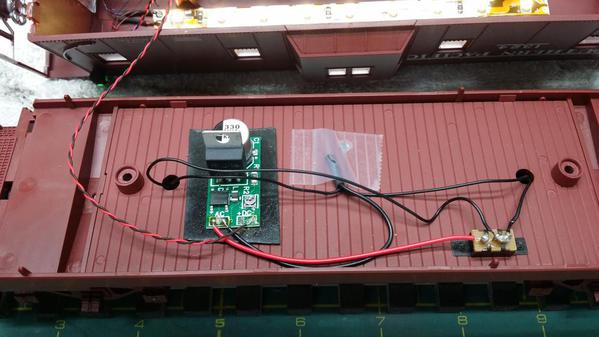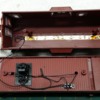I just completed my first passenger car conversion to LEDs using John's circuit with R1 at 100 Ohms and a strip of 12 3mm LEDs. The passenger car is a Rail King 13 inch 20th Century Limited streamliner.
Although I used warm white LEDs, the light appears to have a pleasant green tint which I would expect for fluorescent lighting. A test run of car in a train was normal with no DCS issues and no flickering.
For heavyweight cars and cabooses, I will try covering the warm white LEDs with one layer of transparent yellow Mylar tape to make the light appear more like incandescent. To eliminate dark spots at the ends of the passenger cars, I am going to separate the LED strip into 2 pieces of 6 LEDs and spread them about 1 inch apart at the middle of the car.
I did not put the circuit on perforated board so I could readily shape the circuit to fit into the car.
I will post photos of the second LED conversion I have just started, so more to follow.
Overall, the circuit meets my expectations and it is fun to assemble. Thanks again John.

















